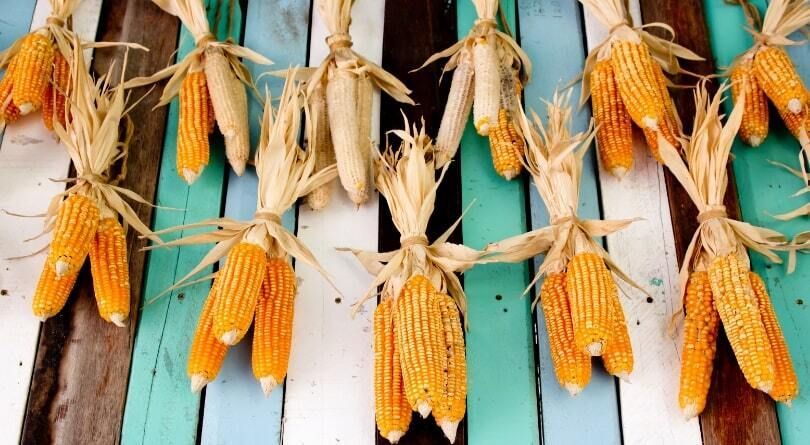Decolonizing Thanksgiving: A Toolkit for Combatting Racism in Schools
A list of resources to help parents approach their children’s schools to advocate for a more inclusive approach to discussing Thanksgiving. These resources will also be useful for teachers wanting to alter their approach to teaching about Native peoples and Thanksgiving. The toolkit is collected by Gaelle Marcel.
Sample Letters to Send to your Child’s School
-
This letter recognizes the harms caused by a problematic classroom activity and suggests Lessons from Turtle Island: Native Curriculum in Early Childhood Classrooms as a suggested resource for ideas for teaching Native culture to children.
-
This letter discusses problematic classroom activities and advocates for discussion of local Native peoples in the classroom.
-
Short and to the point, this letter points out that dressing up as Pilgrims and Indians fails to foster inclusivity in school environments and perpetuates myths of Thanksgiving.
-
A generic letter advocating for inclusive education and discussion of diversity of Native peoples in the past and present.
Resources for Educators and Families to Teach about Thanksgiving & Native Peoples in a Socially Responsible Way
-
While some of her suggestions were specific to 2016, Bratman offers suggestions for individuals and families to change their holiday traditions to take action against racism, social injustice, and environmental degradation.
-
Includes resources to “help educators [disrupt] the hegemonic Thanksgiving story,” as well as an explanation of how these depictions of Native people are harmful.
-
100+ lessons and resources grouped by grade level (PreK-2, 3–5, 6–8, 9–12) including lessons rethinking Thanksgiving and lessons considering Native culture and tradition, land use, historical inaccuracies in movies, etc.
-
Includes background reading for teachers, as well as videos, books, and activities for students.
-
A set of resources about challenging stereotypes about Native peoples, celebrating the accomplishments & culture of Native Americans, and teaching a more complex story of Columbus’s arrival in the Americas.
-
A list of compiled resources for talking about Thanksgiving through “an anti-racist and racial justice lens,” including teaching resources & lesson plans, historical resources, and information on Native American Perspectives, Contributions and Celebrations.
-
This book includes five cross-cultural themes — Children, Home, Families, Community, and the Environment — and includes ideas to “incorporate authentic learning experiences about Native Americans into your curriculum.”
-
Counters 11 myths about Thanksgiving like “The Pilgrims and Indians became great friends.”
-
A resource for teachers grades 4–8 providing context and lesson ideas around the following themes: 1) Environment: Understanding the Natural World, 2) Community: Group Identity in Culture, 3) Encounter: Effects on Cultures, and 4) Sharing: New Perspectives Year-Round.
Children’s Books about Native Peoples, Cultures, and Traditions
-
tory in English with companion retelling in Ojibwe.
-
Includes a glossary and the complete Cherokee syllabary.
-
From an award-winning Native American storyteller comes this captivating re-telling of a Cherokee legend, which explains how strawberries came to be. Long ago, the first man and woman quarreled. The woman left in anger, but the Sun sent tempting berries to Earth to slow the wife’s retreat.
-
The process of growing and harvesting corn takes all four seasons and is an integral part to the Hochunk food culture. The corn cycle begins in the spring when the family travels to their country farm to plow the soil. Hunter’s book details preparing the earth, planting corn seeds, harvesting them in the fall, and then driving the crop back to St. Paul to blanche, dry and store it… [The book] explains the importance of the Winnebago food tradition, adding Hochunk words and related stories. The story is told through the lens of Hunter’s family, including her grandson Russell, a student, athlete and heartfelt participant in Winnebago tradition.
-
Ji-Stu, the Cherokee trickster rabbit, wakes early one morning and decides to visit his old friend Otter, who lives up the river. Along the way, he sees a huge wood duck sitting on the water and instantly recognizes the Chief of All the Wood Ducks, who is surrounded by hundreds of smaller ducks…
-
Steven Peters, a twelve-year-old Wampanoag Indian in Massachusetts, learns from his grandfather how to prepare a clambake in the tradition of his people.
-
In this unique series, Native American authors examine their cultural traditions, from Navajo rug weaving in the Southwest to wild rice gathering in northern Minnesota. Each book describes these customs as they are seen through the eyes of the participants and discusses how Native American people maintain their cultural identities in contemporary society.
-
“Giving Thanks” is a special children’s version of the Thanksgiving Address, a message of gratitude that originated with the Native people of upstate New York and Canada and that is still spoken at ceremonial gatherings held by the Iroquois, or Six Nations.
-
Describes how Indians have relied on the sugar maple tree for food and tells how an Anishinabe Indian in Minnesota continues his people’s traditions by teaching students to tap the trees and make maple sugar.
-
Why are ravens black? Why do screech owl eyes look red in light? How did we get fire? You’ll find the answers to those questions in this retelling of a Cherokee pourquoi folktale. The earth was cold and dark but the animals could see fire coming from the tree on the island. They tried to fly or swim to the island to bring back the fire heat and light.
Lists of Children’s Books about Native Peoples, Cultures, & Traditions
-
These picture and board books are from a book list we did in partnership with @dreese_nambe (Nambé Pueblo, American Indians in Children’s Literature) and Brooklyn Children’s Museum (@bcmkids). The featured titles all take place in present day.
-
For more reading suggestions for children’s books by Native peoples and about Native peoples, this site “provides critical perspectives and analysis of indigenous peoples in children’s and young adult books, the school curriculum, popular culture, and society.” The page includes “links to book reviews, Native media, and more.”


